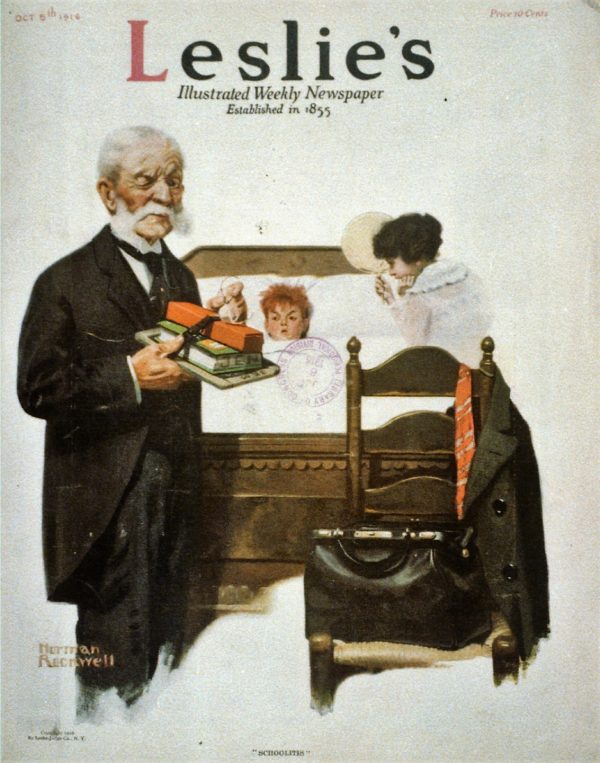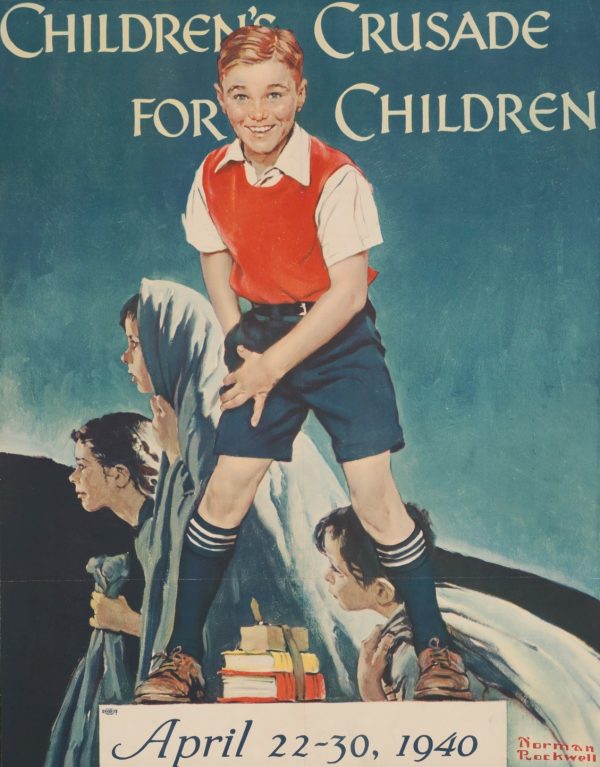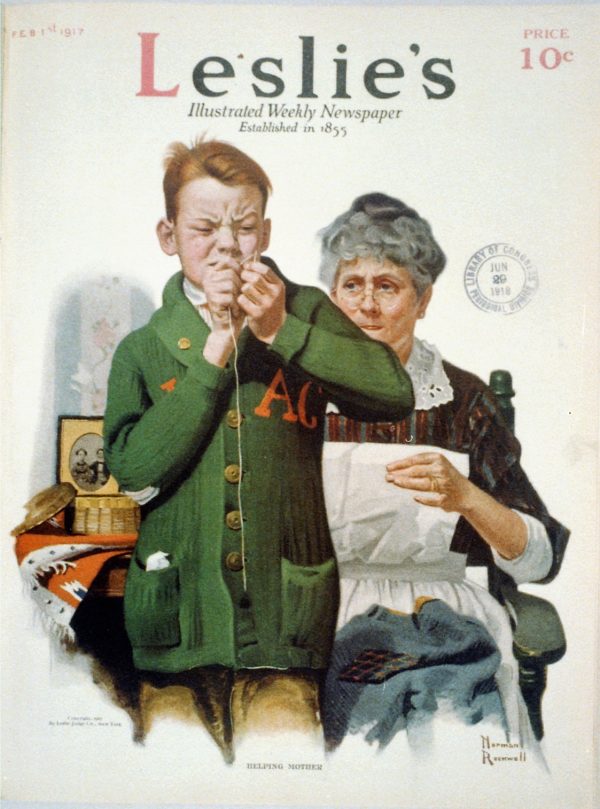If it’s worth doing, it’s worth doing for Him.
I love the art of Norman Rockwell. I love that he painted moments from American life: Thanksgiving dinner with the family, Boy Scouts praying at their campsite, Mother’s arms outstretched when her son comes back from war. Rockwell painted scenes that made us feel good about ourselves. In the movie, “It’s a Wonderful Life,” Mary tries to get George to quit throwing rocks at the old Granville house and says to him, “I want to live in it.” I feel the same way about Norman Rockwell’s paintings that Mary felt about the Granville house. It would be fun to live in many of them, at least for a little while. I think his paintings help us see the value of each human being. Norman Rockwell once said:
Without thinking too much about it in specific terms, I was showing the America I knew and observed to others who might not have noticed.
Norman Rockwell was a storyteller, who used pictures rather than words. He painted people in situations that his viewers immediately recognized. His paintings make us smile, chuckle, or belly laugh.

They make us feel sympathy for others. They make us think.

Rockwell was a gifted and talented artist who was well on his way to a professional career before he was 20 years old, but he also had a strong work ethic. He studied art and prepared well for his career, and he worked at it for six decades.
Rockwell worked for accuracy. When he painted a scene in an auto mechanic’s garage, he gathered his models and objects and went to a local garage. Rockwell often found models among his neighbors and friends. To test models, he would see how far they could raise their eyebrows. That way he could be sure they could make the facial expressions he wanted. Rockwell used the same people in many paintings. If you look closely, you will find Rockwell himself in many of them.
Rockwell began with an idea and then arranged his scenes with real objects and real people. He moved them again and again until they looked just right. He acted out expressions for his models and sometimes sent them to change clothes. When everything was to his liking, he made sketches. Finally, he painted his illustration on a large canvas. Many were about 3 feet by 4 feet.

As you know, I’ve had President Eisenhower on my mind lately. In 1952 the Saturday Evening Post asked Rockwell to paint a portrait of Eisenhower. Rockwell was a great fan of the general. The portrait appeared on the cover of the October 11, 1952, issue. The issue also included an illustrated article entitled, “The Day I Painted Ike,” written by Rockwell. In 1955 Rockwell was a guest of Eisenhower at the White House. He was a nervous wreck! When Eisenhower was in the hospital in 1968, Rockwell wrote to him that he was the best model he had ever had.
Sometimes Rockwell felt stuck and wondered what to do next. He became afraid that his career was over. He did not give up. He kept trying. He went to his studio at eight o’clock in the morning and painted. He stopped at noon for lunch and then went back to the studio to paint until five or six o’clock in the evening. Instead of trying to think his way out or trying to escape a problem, Norman Rockwell believed he should work his way out of it.
I fear that we sometimes want things to be too easy. Even before sin came into the world, God gave Adam work to do. One important lesson to teach our children is that accomplishment takes effort and persistence. As mamas, we need to teach our children to try, to try again, to work, to work hard, and to get up the next day and do it again. The need for effort and persistence applies to the work we do with our hands, the lives we live, and our service for God. If it’s worth doing, it’s worth doing for Him.
Whatever you do, do your work heartily,
as for the Lord and not for people,
knowing that it is from the Lord
that you will receive the reward of the inheritance.
It is the Lord Christ whom you serve.
Colossians 3:23-24

